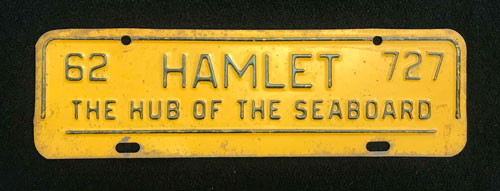“No Carolinas train tour can omit quaint Hamlet, just east of Rockingham. It was here that the rails of the Seaboard Air Line crossed and headed into the four cardinal directions. At the turn of the 20th century, more than 30 trains a day paused on journeys to New York, New Orleans, Norfolk and Florida.
“ ‘Hamlet was like the Charlotte airport is today,’ says Miranda Chavis, who manages the rail museum beside the restored 1900 passenger station built in grand Queen Anne Victorian style. ‘Small town, big railroads.’
“It was one of the nation’s earliest tourist traps. There were seven hotels and many boarding houses for transferring passengers in the town nicknamed “Hub of the Seaboard.” Shops and restaurants catered to visitors. There was an opera house where tenor Enrico Caruso once performed. Lavish accommodations were to be found at the Seaboard Hotel, which fronted the tracks.
“Hamlet, pop. 6,000, is still a railroad town. Amtrak stops twice a day, and Seaboard’s successor railroad CSX has a massive switching yard just outside town. In front of the Hamlet station, the tracks still cross and trains constantly thunder through, attracting train watchers. In the book ‘Guide to North American Railroad Hot Spots’ by J. David Ingles, Hamlet is listed as the prime watching spot for train fans in North Carolina.”
— From “Love of railroads spans the Carolinas” by Mark Washburn in the Charlotte Observer (May 26, 2013)

